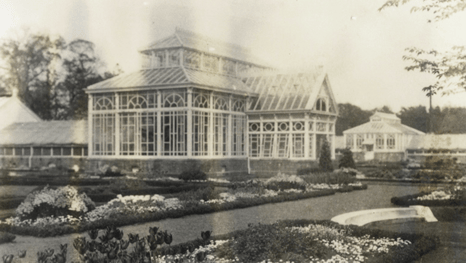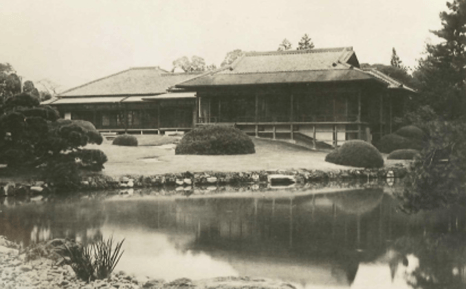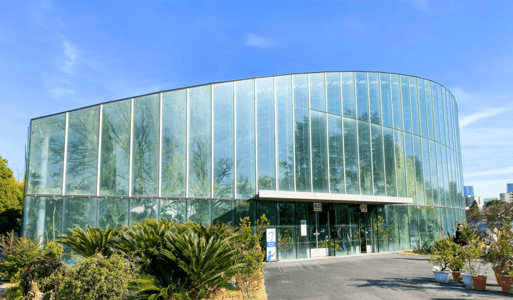🕓 2024/8/10
#観光地
A Detailed Explanation of the History and Overview of Shinjuku Gyoen
-Aug-03-2024-02-44-14-8188-AM.jpg?width=825&height=464&name=%E5%BC%81%E5%A4%A9%E5%A0%82%20(1)-Aug-03-2024-02-44-14-8188-AM.jpg)
Contents
- Overview of Shinjuku Gyoen
- History of Shinjuku Gyoen
- Highlights of Shinjuku Gyoen
Introduction
Shinjuku Gyoen is a vast national park located in Shinjuku Ward, Tokyo. Covering an area of approximately 58.3 hectares and with a circumference of about 3.5 kilometers, it is cherished by many as an oasis in the heart of the city. The park is characterized by its skillful combination of three distinct garden styles: a traditional Japanese garden, a formal French garden, and an English landscape garden.
With its historical buildings and beautiful seasonal landscapes, Shinjuku Gyoen is a popular spot for both tourists and locals. This article provides a detailed overview of Shinjuku Gyoen, its history, and its highlights.
1. Overview of Shinjuku Gyoen
-Aug-03-2024-02-44-15-7843-AM.jpg?width=533&height=300&name=%E5%BC%81%E5%A4%A9%E5%A0%82%20(4)-Aug-03-2024-02-44-15-7843-AM.jpg)
Shinjuku Gyoen is a national park located in Shinjuku Ward, Tokyo, covering an area of approximately 58.3 hectares and with a circumference of about 3.5 kilometers. The park is situated on the site where the Naito family's residence, the lords of the Shinano Takato domain, once stood during the Edo period. In the Meiji period, it was transformed into the Naito Shinjuku Experimental Station for agricultural development. Later, it came under the management of the Imperial Household Agency (now the Imperial Household Agency) and was used as the "Shinjuku Imperial Botanical Garden." In 1906, it was officially opened as an imperial garden, and after World War II, it was opened to the public as a national park in 1949.
-Aug-03-2024-02-44-15-4967-AM.jpg?width=532&height=299&name=%E5%BC%81%E5%A4%A9%E5%A0%82%20(8)-Aug-03-2024-02-44-15-4967-AM.jpg)
Shinjuku Gyoen is characterized by its skillful combination of three distinct garden styles: a traditional Japanese garden, a formal French garden, and an English landscape garden. The Japanese garden is especially beautiful throughout the year, featuring cherry blossoms in spring, colorful foliage in autumn, and snowy landscapes in winter. The plane tree avenue of the formal French garden and the spacious lawns of the English landscape garden are also notable attractions.
Highlights of the park include historical buildings such as the "Great Greenhouse" and the "Old Imperial Rest House." The Great Greenhouse, one of the largest of its kind in the Orient, was renovated and reopened in 2012 as an environmentally friendly facility focused on the preservation and exhibition of endangered species. The Old Imperial Rest House, a Western-style building once used by the imperial family, is highly valued for its historical significance.
-Aug-03-2024-02-44-15-4285-AM.jpg?width=539&height=303&name=%E5%BC%81%E5%A4%A9%E5%A0%82%20(3)-Aug-03-2024-02-44-15-4285-AM.jpg)
Every spring, the "Cherry Blossom Viewing Party" is held, and in autumn, the "Chrysanthemum Exhibition" takes place. These popular events attract many visitors and can be enjoyed along with the beautiful gardens of Shinjuku Gyoen. The park is home to about 10,000 trees, and in spring, approximately 1,000 cherry trees reach full bloom, drawing numerous tourists. In autumn, the Chrysanthemum Exhibition, associated with the imperial family, offers another seasonal delight.
2. History of Shinjuku Gyoen
Shinjuku Gyoen has evolved over the centuries, serving various roles and becoming a beloved oasis in the heart of the city. Below are the major periods that have influenced Shinjuku Gyoen.
・ Edo Period (1590 - 1868)
The history of Shinjuku Gyoen dates back to the Edo period. In 1590, when Tokugawa Ieyasu entered the Kanto region, he granted a vast estate to his loyal vassal, Naito Kiyonari. This land is the origin of what is now Shinjuku Gyoen. The Naito family established a daimyo residence here and used the area throughout the Edo period. A legend says that Ieyasu told Kiyonari, "You can have all the land you can ride around on horseback." Kiyonari rode a white horse and marked off a vast area, which became his estate.
・Meiji Period Agricultural Experiment Station (1872 - 1906)
※出展:新宿御苑公式 HP
After the Meiji Restoration, in 1872, the Naito Shinjuku Experimental Station was established to promote agriculture. This station played a significant role, especially in horticulture. In 1879, it came under the management of the Imperial Household Agency and was renamed "Shinjuku Imperial Botanical Garden." This period marked an enhancement of its role as an agricultural research facility, focusing on floriculture, sericulture, and forestry research.
・Birth of the Imperial Garden (1906 - 1945)

※出展:新宿御苑公式 HP
In 1906, Shinjuku Imperial Botanical Garden was transformed into an imperial garden known as "Shinjuku Gyoen." French landscape architect Henri Martinet was involved in the redesign, which combined European garden styles with traditional Japanese gardens. This project was driven by Hayato Fukuba, who was in charge of Shinjuku Gyoen and made significant contributions to horticulture, such as exhibiting chrysanthemums at the Paris Exposition, where he received high praise.
Shinjuku Gyoen was used as a garden for imperial ceremonies and to entertain foreign dignitaries. The opening ceremony, which also celebrated the victory in the Russo-Japanese War, was held in the presence of Emperor Meiji.
・ Post-war Reconstruction and Public Opening (1945 - Present)-Aug-03-2024-02-44-15-1485-AM.jpg?width=532&height=299&name=%E5%BC%81%E5%A4%A9%E5%A0%82%20(2)-Aug-03-2024-02-44-15-1485-AM.jpg)
In 1945, many facilities of Shinjuku Gyoen were destroyed in the Tokyo air raids, but it was reopened to the public as "National Park Shinjuku Gyoen" in 1949. In 1952, the first National Memorial Service for the War Dead was held here, and in 2012, the Great Greenhouse was renovated and reopened. Shinjuku Gyoen remains a cherished oasis in the city, offering beautiful seasonal landscapes that attract many visitors.
3. Highlights of Shinjuku Gyoen
Shinjuku Gyoen is widely known as an urban oasis, with various gardens and historical buildings scattered across its vast grounds. Here are the main highlights of Shinjuku Gyoen in detail.
■ Japanese Garden-Aug-03-2024-02-44-15-3225-AM.jpg?width=532&height=299&name=%E5%BC%81%E5%A4%A9%E5%A0%82%20(7)-Aug-03-2024-02-44-15-3225-AM.jpg)
The Japanese Garden in Shinjuku Gyoen is designed as a traditional strolling garden centered around "Tamamo Pond." Visitors can enjoy the changing scenery of the four seasons by walking around the pond. Particularly in autumn, the beautiful foliage provides a tranquil and picturesque setting unique to Japanese gardens. Additionally, the "Kyu Goryotei" (Taiwan Pavilion), built in 1927 to commemorate the wedding of Emperor Showa, features Chinese architectural styles, adding an exotic touch to the garden.
■ Formal Garden (French Garden)
The Formal Garden is located on the eastern side of Shinjuku Gyoen and is characterized by its symmetrical and elegant design. At the center of the garden is a rose bed with about 100 varieties and 500 rose bushes in full bloom. Surrounding the rose garden is an avenue of plane trees, which are particularly striking in autumn when the leaves turn vibrant colors. This garden offers breathtaking beauty and is an ideal spot for photography.
■ Landscape Garden (English Landscape Garden)
-Aug-03-2024-02-44-14-8932-AM.jpg?width=535&height=301&name=%E5%BC%81%E5%A4%A9%E5%A0%82%20(15)-Aug-03-2024-02-44-14-8932-AM.jpg)
The spacious lawns of the Landscape Garden are perfect for picnics and reading. The garden's symbolic tree, a tulip tree standing about 35 meters tall, overlooks the area and welcomes visitors. The garden also features the "Kyu Goryotei" (Old Imperial Rest House), a designated Important Cultural Property, which adds historical depth to the scenery.
■ Great Greenhouse
The Great Greenhouse in Shinjuku Gyoen is one of the largest dome-shaped greenhouses in the Orient. Renovated and reopened in 2012, it now serves as an environmentally conscious facility dedicated to the preservation and exhibition of endangered species. The greenhouse houses tropical and subtropical plants, which can be enjoyed year-round. Inside, there are also impressive collections of orchids and ferns on display.
■ Old Imperial Rest House
The Old Imperial Rest House, built in 1896, served as a resting place for the Emperor and the imperial family. This wooden Western-style building is based on the Stick Style architectural design. It was expanded to its current size in 1924. Opened to the public on April 29, 2001, "Greenery Day," it was designated an Important Cultural Property in October of the same year. It is the only remaining imperial garden facility from the Meiji and Taisho periods in Shinjuku Gyoen, renowned for its architectural beauty and historical significance.
■ Events and Seasonal Highlights-Aug-03-2024-02-44-15-8604-AM.jpg?width=532&height=299&name=%E5%BC%81%E5%A4%A9%E5%A0%82%20(11)-Aug-03-2024-02-44-15-8604-AM.jpg)
-Aug-03-2024-02-44-15-0867-AM.jpg?width=533&height=300&name=%E5%BC%81%E5%A4%A9%E5%A0%82%20(16)-Aug-03-2024-02-44-15-0867-AM.jpg)
Throughout the year, Shinjuku Gyoen hosts various events. During the special opening period in spring (March 25 to April 24), the garden becomes a popular cherry blossom viewing spot, attracting many visitors. The garden boasts around 1,000 cherry trees of 65 varieties, including Somei Yoshino, Yamazakura, and Shidarezakura, which bloom successively, enchanting all who visit.
In November, the Chrysanthemum Exhibition, a traditional event since 1904, showcases chrysanthemum displays modeled after the imperial chrysanthemum beds. Held in the upper tiered stands of the Japanese strolling garden, the event features a variety of chrysanthemums in full bloom, competing in beauty. This event has become an autumn tradition in Shinjuku Gyoen.
During the summer, educational events such as "Greenhouse Observation Classes" and "Greenhouse Backstage Tours" are held. These events offer detailed explanations by Shinjuku Gyoen specialists on the plants and horticultural techniques used in the greenhouse, allowing participants to deepen their knowledge of plants.
In autumn, the "Forest Noh Theater" held in September offers a unique opportunity to experience traditional Japanese culture, with Noh performances staged under torchlight.
★ Introduction to Our Tourist Site ★
We introduce carefully selected tourist destinations in Japan like those in this article. By bookmarking this site, you can stay updated with essential tourist information. We are continually updating the site to provide even more exciting experiences in discovering tourist spots.
↓↓Click the image if you are interested↓↓%20(1).png?width=578&height=325&name=%E5%90%8D%E7%A7%B0%E6%9C%AA%E8%A8%AD%E5%AE%9A%E3%81%AE%E3%83%87%E3%82%B6%E3%82%A4%E3%83%B3%20(25)%20(1).png)
Conclusion
Shinjuku Gyoen is cherished by many as a peaceful oasis that helps visitors forget the hustle and bustle of the city. The expansive grounds feature a skillful combination of three distinct garden styles: a traditional Japanese garden, a formal French garden, and an English landscape garden, offering beautiful scenery throughout the seasons. Historical buildings and various events held throughout the year add depth to its cultural and historical significance.
By experiencing the beauty and history of Shinjuku Gyoen, all visitors can find solace and inspiration. Enjoy a special time at Shinjuku Gyoen, surrounded by the seasonal beauty of nature.
